Can you grow an olive tree indoors? Experts reveal how to do it successfully
This Mediterranean tree needs the right care to survive indoors
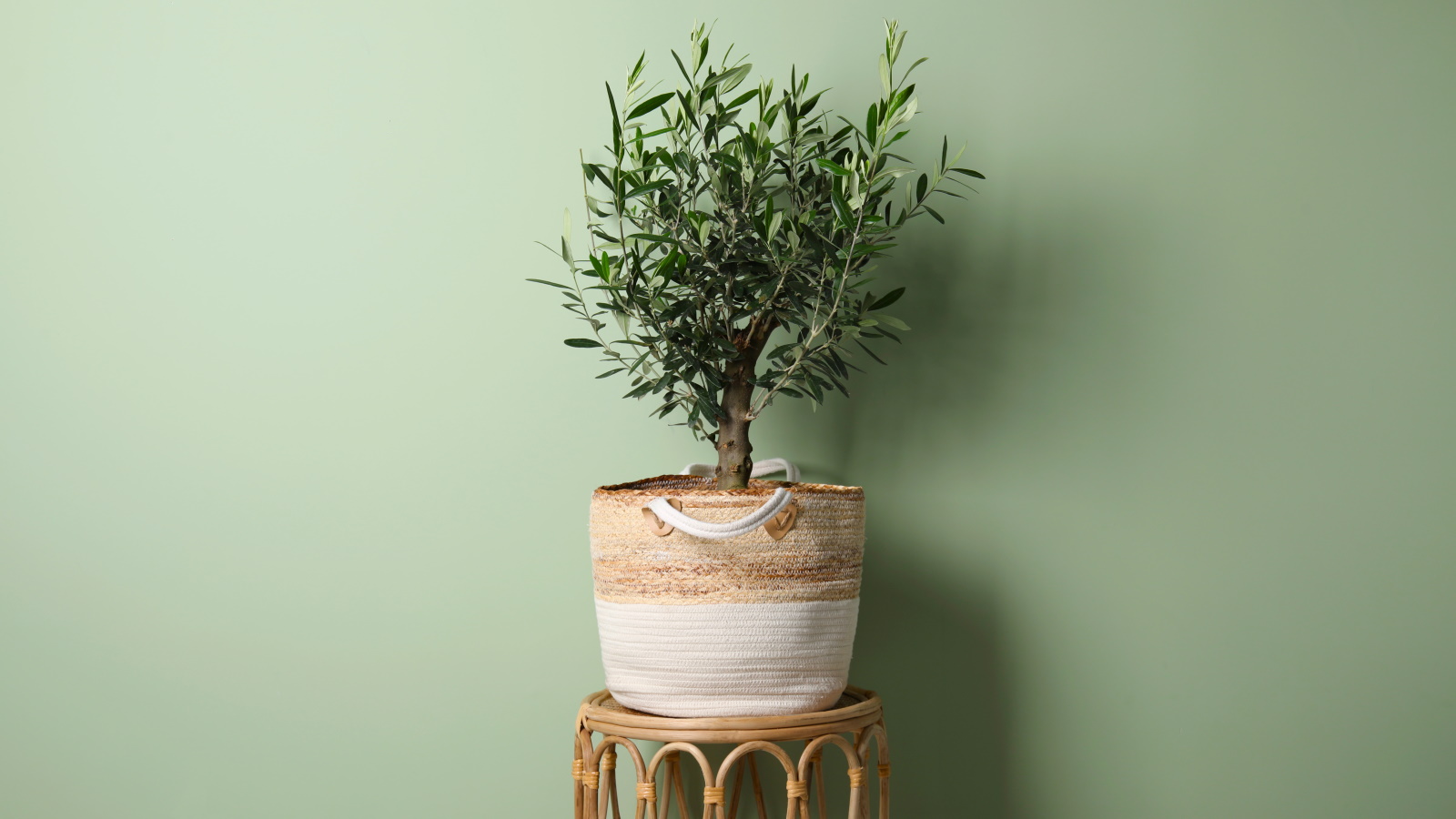

Potted trees give indoor gardeners the opportunity to add height to indoor displays and bring nature inside. In the case of fruit trees, growing different varieties indoors can also add assets to your indoor kitchen garden.
Growing and caring for olive trees is easy in outdoor environments in US hardiness zone 6 to zone 11, however choosing to have them as indoor trees can be a bit more challenging. Native to Mediterranean climates, these beautiful trees need particular conditions to thrive.
But don't worry, we've asked experts how to best care for an olive tree indoors so that you can bring one inside for green impact in your home.
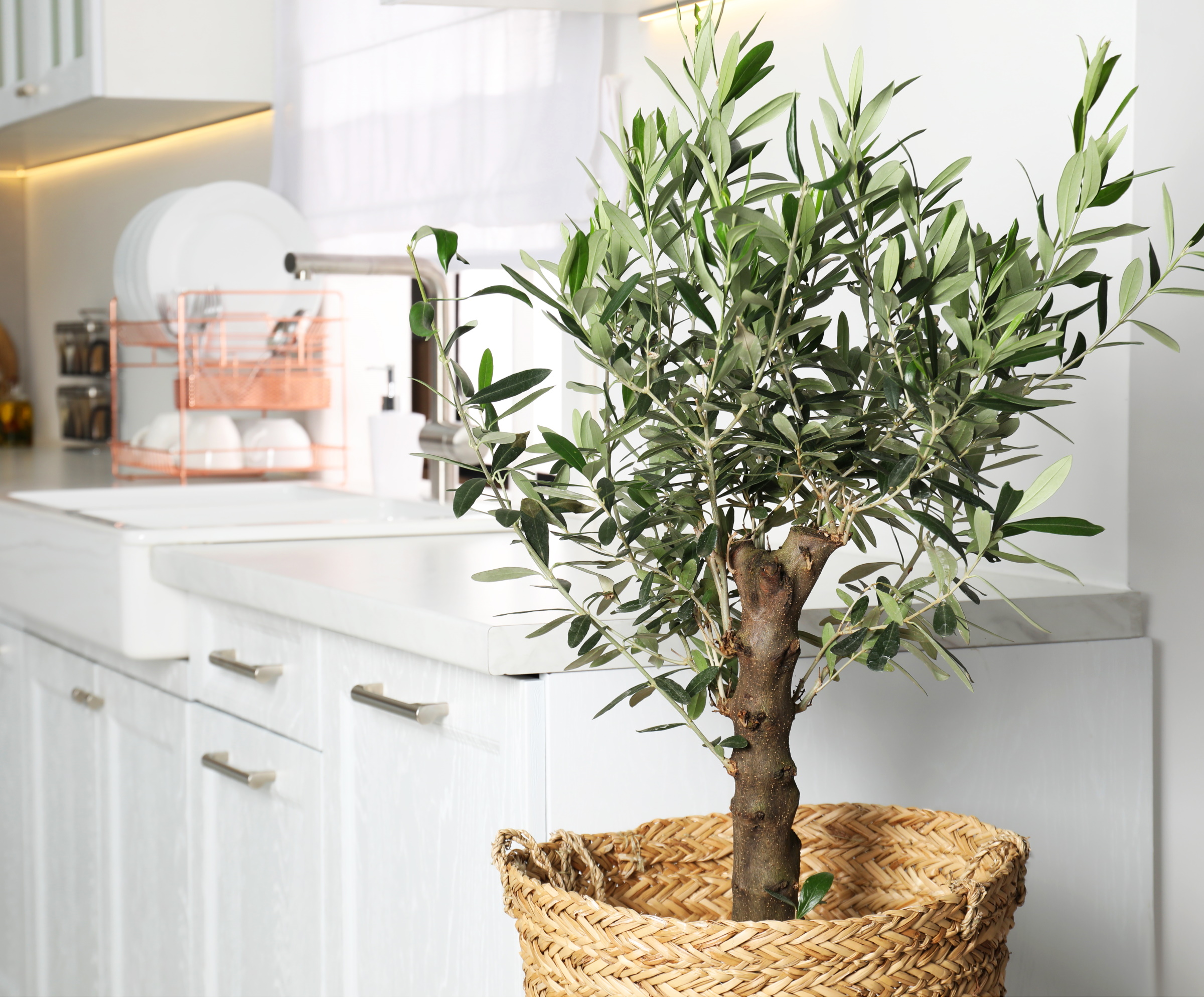
How to care for an olive tree indoors
There's an art to caring for tropical indoor plants, but when you replicate qualities of their natural environment they can thrive happily. Follow our expert guide to caring for olive trees indoors to add green structure to your home.
1. Find a sunny spot
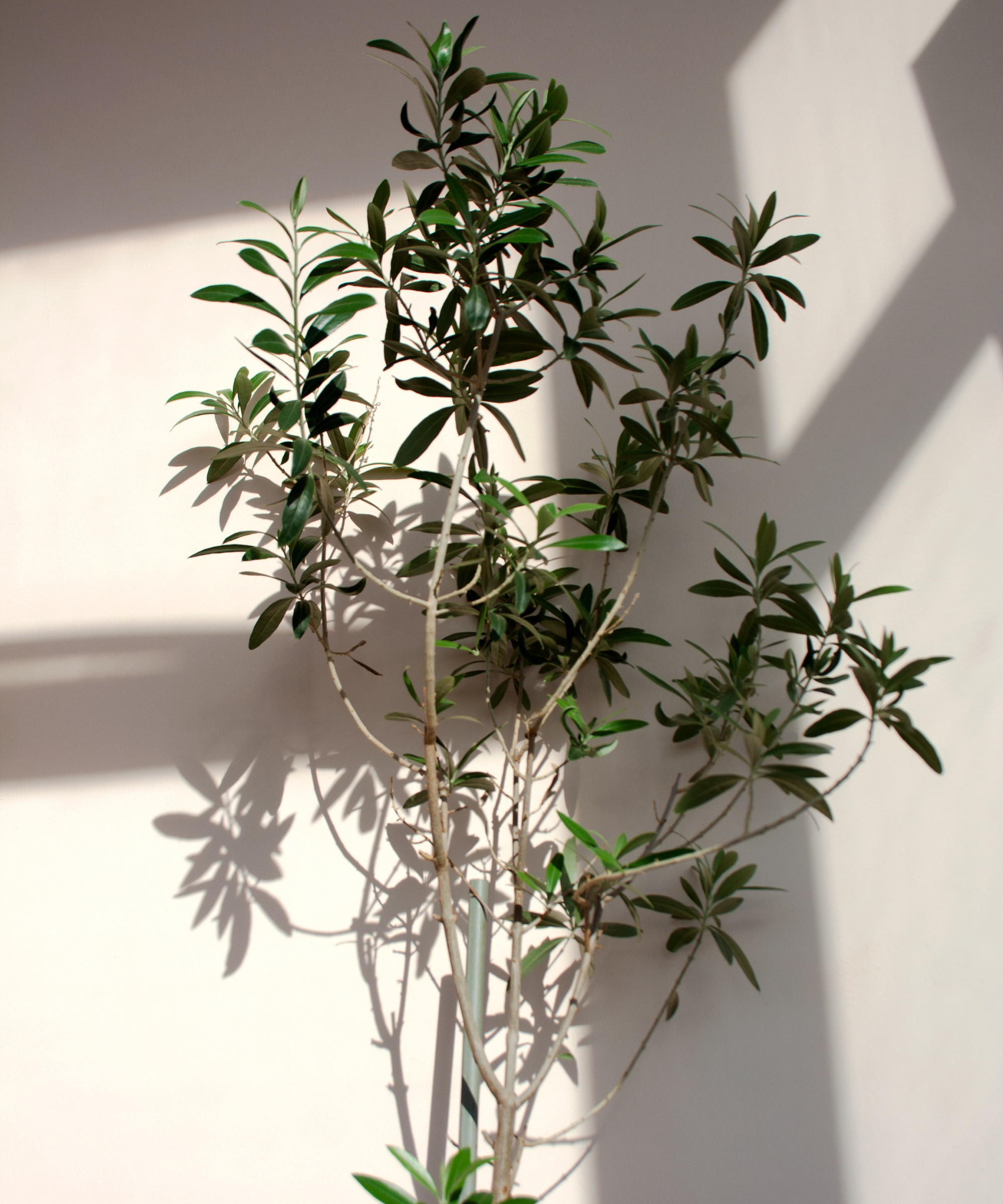
Whether you want to grow an olive tree indoors for its fruit or just its beautiful shape, it needs plenty of sunlight to stay happy.
'Olive trees are surprisingly easy to care for indoors, as long as you mimic their sunny Mediterranean climate,' says Evan Torchio, tree expert and CEO of Tree Mender. 'They crave bright light, ideally at least six hours of direct sunlight a day from a south-facing window,' he adds.
In their natural environments, olive trees are often growing exposed to direct sunlight. Unlike indoor low light plants, indoor olive trees don't do well in darker spots. In fact, insufficient light could cause an olive tree to drop its leaves.
'The best way to ensure that your olive tree is getting enough light is to purchase grow lights,' says Diane Kuthy, the founder of How To Grow Everything.
'If you live in US hardiness zone 4 to zone 7, I would even say that there is a low chance that your olive tree will survive the cloudier winter days without a proper grow light,' she adds.
Grow lights are widely available online, like this grow light from Amazon.

Evan Torchio is a plant expert and the CEO and Founder of Tree Menders. He earned a bachelor’s degree in forestry and is a member of the International Society of Arboriculture. Evan provides advice on indoor and outdoor plants.
2. Keep moisture levels consistent
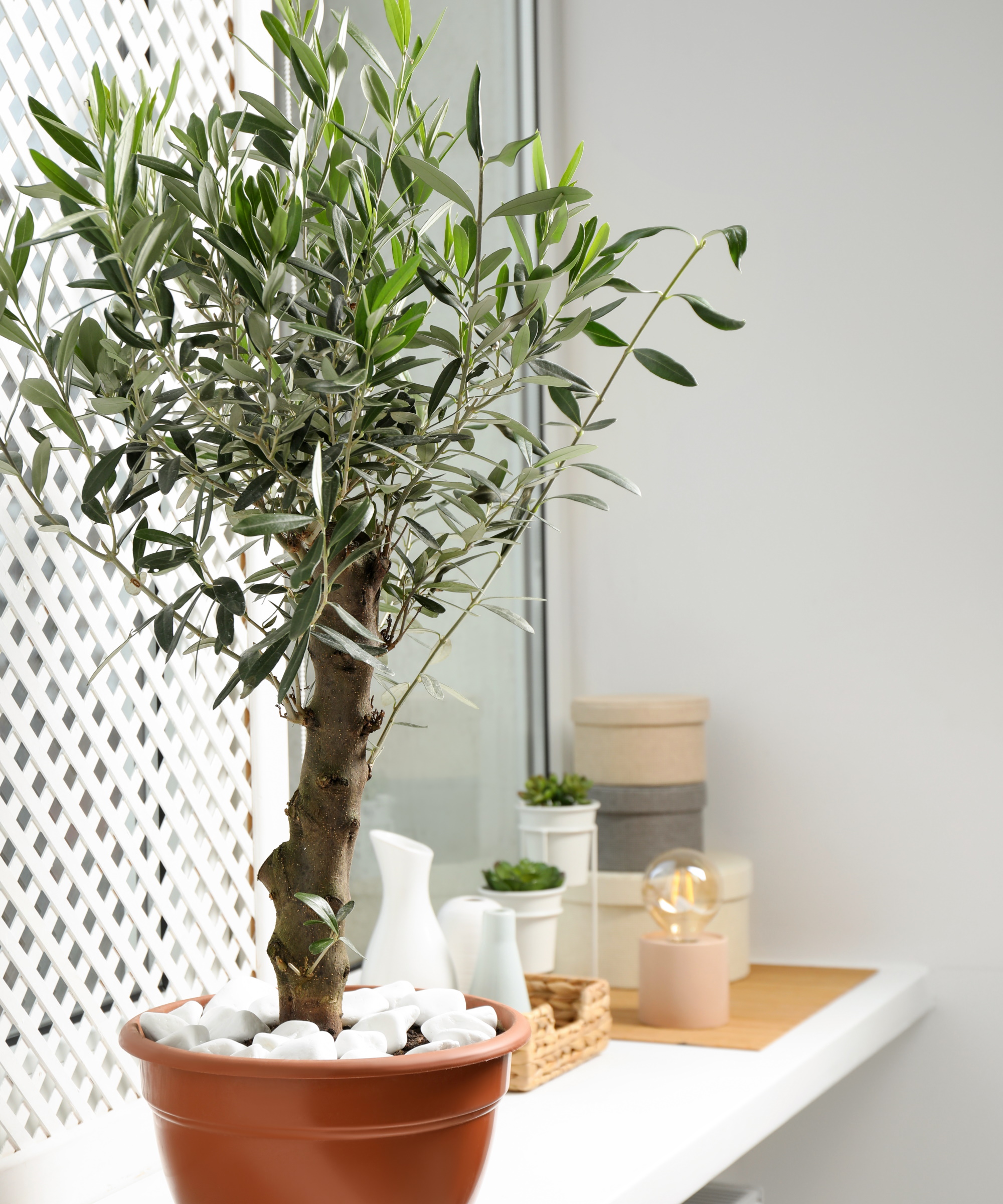
Although olive trees are drought-tolerant and can withstand drying out between watering, they appreciate consistent moisture levels. This is especially true when growing your olive tree indoors because it doesn't benefit from rainfall.
'Water them when the top inch of soil feels dry to the touch, but avoid leaving them soggy,' says Evan.
Take care not to overwater your olive tree as it could lead to houseplant root rot and other problems.
The best thing to do is monitor moisture levels, for example with this soil moisture meter from Amazon. When the top part of the soil has dried out, you can give your indoor olive tree a drink.
'I like to use watering globes and self-watering systems for picky trees like olive trees because they provide constant light moisture as the tree needs it,' says Diane.
Self-watering planters, like this self-watering planter from Amazon, can help you ensure your plant is absorbing as much moisture as it needs and nothing more.

Diane Kuthy is the founder and lead plant expert at How To Grow Everything, a collection of comprehensive grow guides for every plant and vegetable. Diane has over 10 years of gardening experience and she currently manages a 5-acre farm, a four-season greenhouse, over 50 perennial fruit and vegetable varieties, and a large indoor plant conservatory.
3. Provide lots of warmth
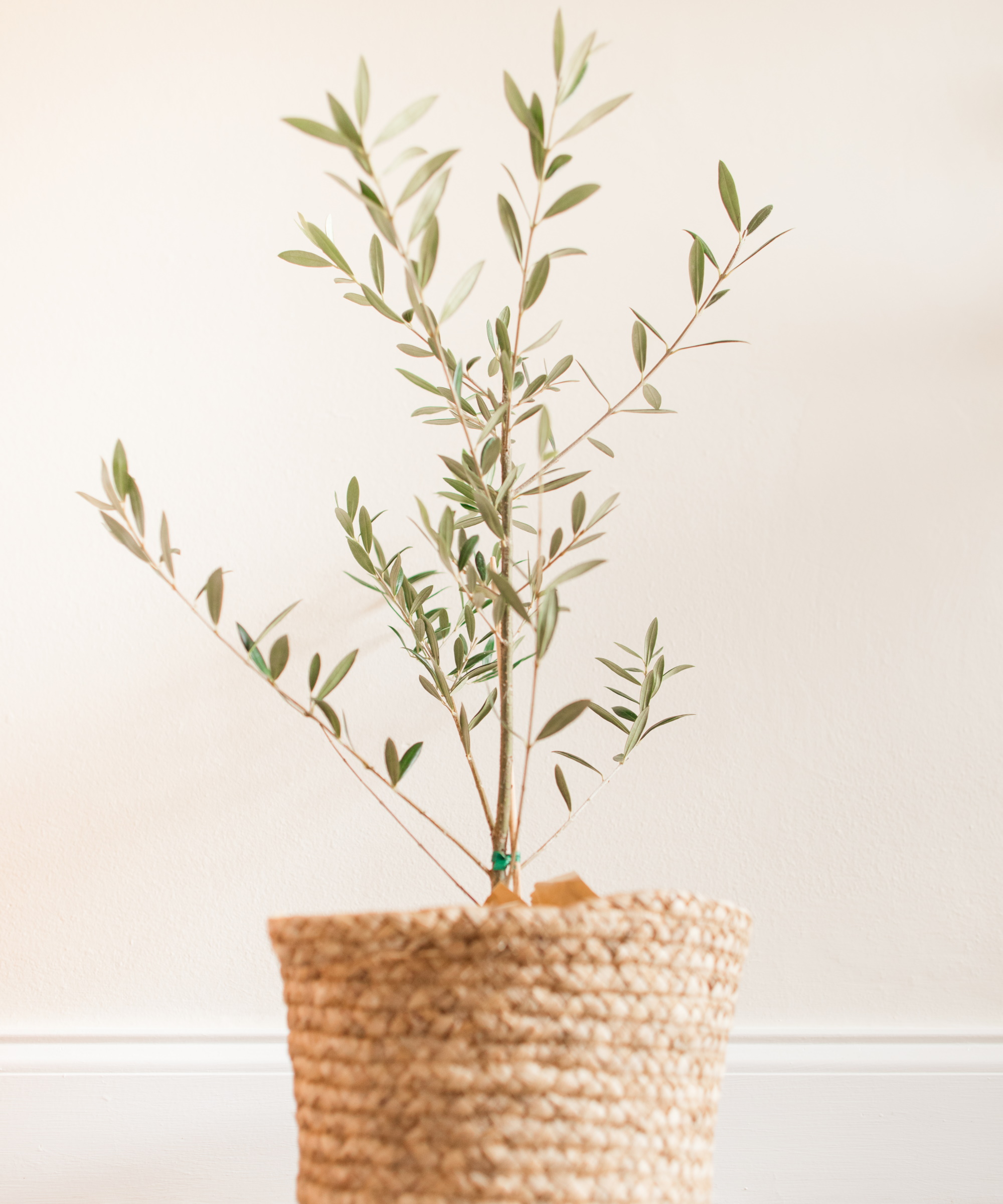
It's no surprise that indoor olive trees aren't among the best cold-tolerant houseplants as they are used to growing in warmer, humid climates. It's therefore key to keep them at a warmer room temperature when growing them in your home.
'The sweet spot for an olive tree is between 80-90°F,' says Diane. 'For the most part, olive trees will display signs of stress at temperatures below 75°F,' she adds.
'Super warm temperatures can be a difficult temperature to maintain indoors and this is one of the primary reasons why olive trees might not thrive in indoor settings,' Diane notes.
If you do choose to grow an olive tree indoors, it's best to keep it in a warm position. A conservatory can be the ideal home for an olive tree because they're often the warmest spots in the home where there is plenty of natural light.
FAQs
Can I harvest my indoor olive tree?
It takes a couple of years before an olive tree has reached full maturity to grow fruit, so long as it is is growing in optimal conditions. You need to ensure your indoor olive tree has enough exposure to direct sunlight, is watered correctly and kept warm to encourage fruit to grow and properly ripen.
Should I mist my olive tree?
Olive trees are native to humid, Mediterranean climates and will appreciate regular misting when grown indoors. Plant misters are widely available online, like this plant mister from Greendigs. There are other ways to increase humidity among indoor plants, such as moving plants close together or using a humidifier.
It is possible to grow olive trees indoors, but it comes with challenges. Nevertheless, if you provide optimal growing conditions and can replicate its native environment, then you're indoor olive tree will thrive for years.
If you're looking for something easier to grow in your home, discover the best low maintenance trees to grow indoors.
Sign up to the Homes & Gardens newsletter
Design expertise in your inbox – from inspiring decorating ideas and beautiful celebrity homes to practical gardening advice and shopping round-ups.

Tenielle is a Gardens News Writer at Homes & Gardens. She holds a qualification in MA Magazine Journalism and has over six years of journalistic experience. Before coming to Homes & Gardens, Tenielle was in the editorial department at the Royal Horticultural Society and worked on The Garden magazine. As our in-house houseplant expert, Tenielle writes on a range of solutions to houseplant problems, as well as other 'how to' guides, inspiring garden projects, and the latest gardening news. When she isn't writing, Tenielle can be found propagating her ever-growing collection of indoor plants, helping others overcome common houseplant pests and diseases, volunteering at a local gardening club, and attending gardening workshops, like a composting masterclass.
-
 How to clean a patio – 6 different methods, and when you must use a chemical cleaning agent
How to clean a patio – 6 different methods, and when you must use a chemical cleaning agentFrom manual scrubbing, natural solutions or calling in the pros, industry experts reveal the benefits and considerations of each method
By Andy van Terheyden Published
-
 Kris Jenner's favorite air fryer, the Ninja Crispi, is the perfect small kitchen solution – it deserves a place on the most compact of countertops
Kris Jenner's favorite air fryer, the Ninja Crispi, is the perfect small kitchen solution – it deserves a place on the most compact of countertopsKris approves of this compact yet powerful air fryer, and so do our own kitchen appliance experts, praising it for its multifunctionality
By Hannah Ziegler Published